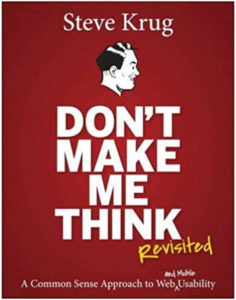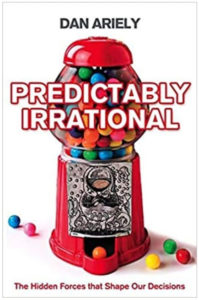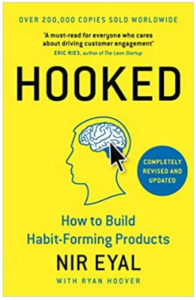1. Behavioral Economics: The Basics
Behavioral Economics challenges the central assumptions of neoclassical economics, by highlighting the fact that humans are not always acting towards the betterment of their current or future situation, nor do they always make well-informed, free of emotions decisions. Of course, trying to achieve financial prosperity without having a grasp about human emotions, seems as naive as trying to understand flying without first figuring out gravity.
However, here we are, trying to pull the same levers that Adam Smith invented three centuries ago.
Behavioral Economics: The Basics by Philip Corr and Anke Plagnol, is an excellent introduction to cutting off the economics blinkers that we have been wearing for hundreds of years and instead understand our consumers via their emotion driven financial choices.
You can find it on Audible here.
2. Don’t Make Me Think, Revisited: A Common Sense Approach to Web Usability (Steve Krug 2014)

Steve Krug’s “Don’t make me think: Revisited” is without a doubt the bible of any good CRO Strategist. After the successful launch of “Don’t make me think” back in 2005, Krug revisited his book in 2014. Here’s hoping he will do another book soon!
Awarded with the title of “Usability Guru” from his fans, Krug takes us through his principles on how to apply a user friendly and information based design that will convert.
With his famous quotes like “We don’t read pages, we scan them” and debunking cliches such as “We don’t need to explain, it’s obvious!” Krug allows any designer, developer or strategist to detach themselves from their perspectives and routines and truly see their creation through the eyes of their users.
3. Predictably Irrational: The Hidden Forces That Shape Our Decisions (Dan Ariely 2009)
Dan Ariely is one of the most famous behavioural economists based in MIT. Ariely is explaining how not only we make faulty decisions on a daily basis but we keep on making the same type of wrong decisions not only in terms of our financial well-being but for our general lifestyle as well.
By identifying the core reasons behind such irrationalities, Dan Ariely is trying to help us make a radical u-turn on understanding what we perceive as our choice triggers. Thankfully, most of our mistakes follow repetitive patterns which are uncovered before our very eyes in this book.
As a Digital Strategist, understanding what is that makes consumers and people in general “tick”, would give a great competitive edge on creating offers that would be very hard to say no to.
You can find it on Audible here.
4. Thinking, Fast and Slow
Nobel prize winner Daniel Kahneman’s book, “Thinking Fast and Slow”, showcases the distinction between two methods of through process that all humans have: A fast, automatic and more importantly sometimes unconscious one and a slow, calculating and conscious one.
By exhibiting the fact that our unconscious thought process is keen on associating new information with already existing patterns in our brain, Kahneman emphasises that we are indeed an animal of habit after all.
By hooking onto those “not always in our favour” thinking traits of our brain, in addition to our nature of jumping into conclusions and our illusion of control, reading Kahneman’s book should give the reader a more realistic picture of the behaviour not only of digital consumers but of those in our everyday lives as well.
You can find it on Audible here.
5. Hooked: How to Build Habit-Forming Products
Think of all the things you are currently hooked with. Netflix? That new candy crushing app? Posting Instagram selfies? Checking our phone up to 150 times a day has become an automatic behaviour at this point that it might as well be labeled as “subconscious”.
Nir Eyal, explains to us how forming strong user habits with our product is the route towards increased conversions driven by internal triggers, that don’t even need an external “nudge”; instead the users just come back for more and more.
By breaking it down to a quartet of “ingredients”, the hook up model Nir Eyal presents to us, is simply a sequence of Trigger – Action – Investment – Variable Reward. Of course, a well made machine ought to work by only turning it on once, so does the hook up model, where the trigger needs to happen only once at the beginning of the circle.
In the end though, this book doesn’t teach you a spell where we could just wave our wand and cast “Much Convertus” and get our Analytics dashboard blink with purchase events. Nir points out that building lifetime customer value, having a flexible pricing policy and being ready for the growth that is to come, are all key factors to reaching our end goal.
You can find it on Audible here.






